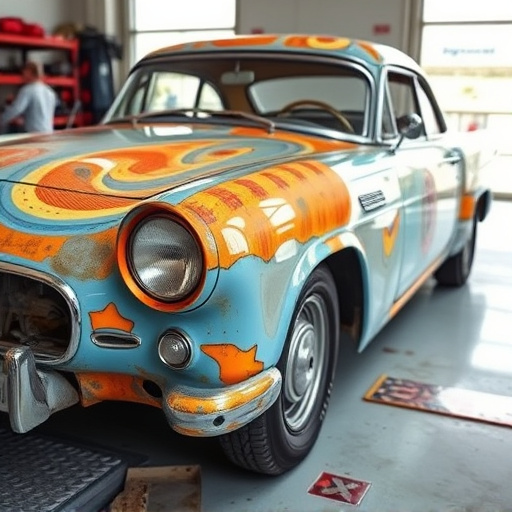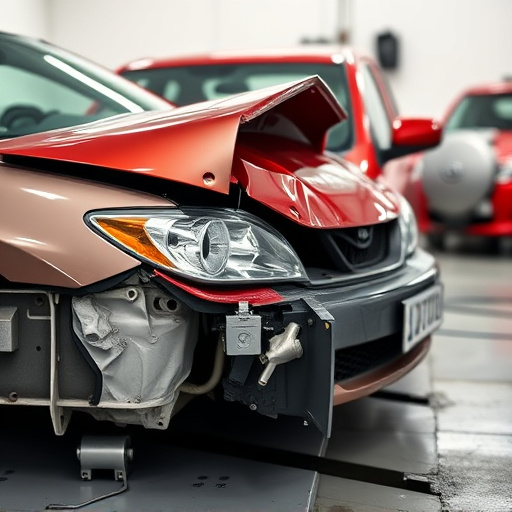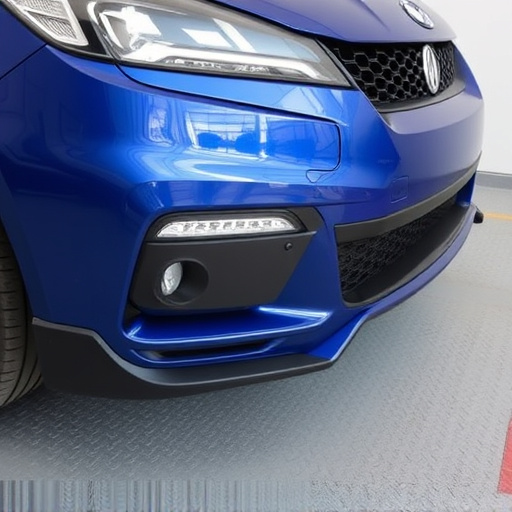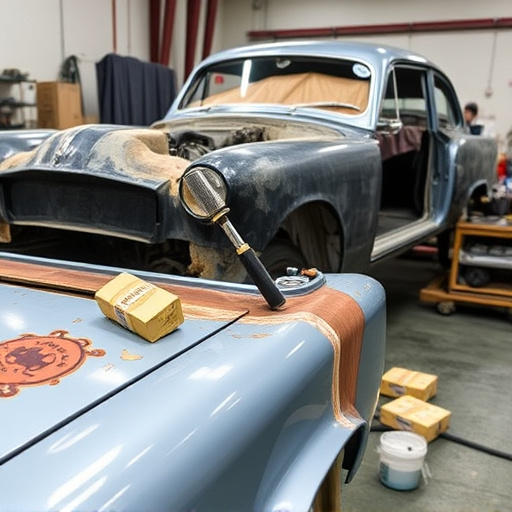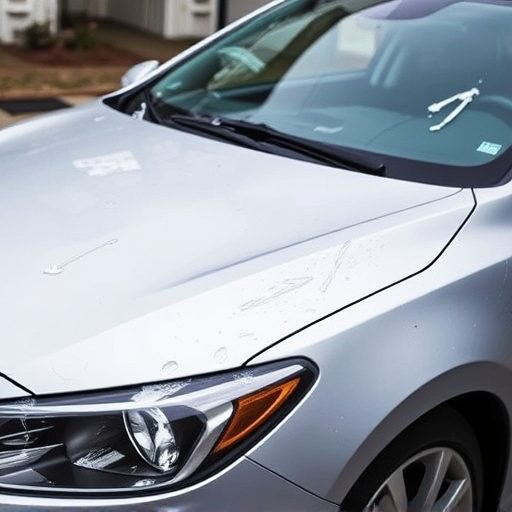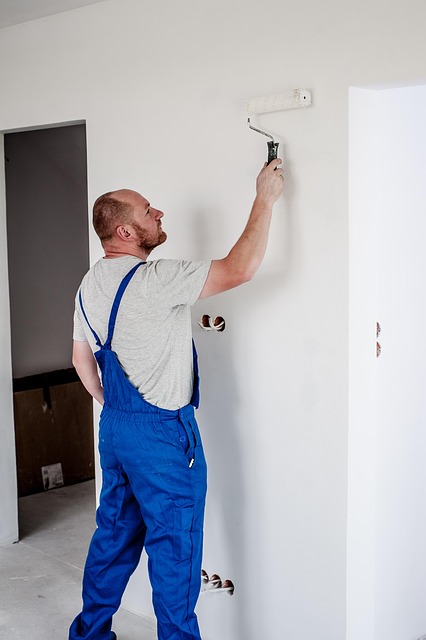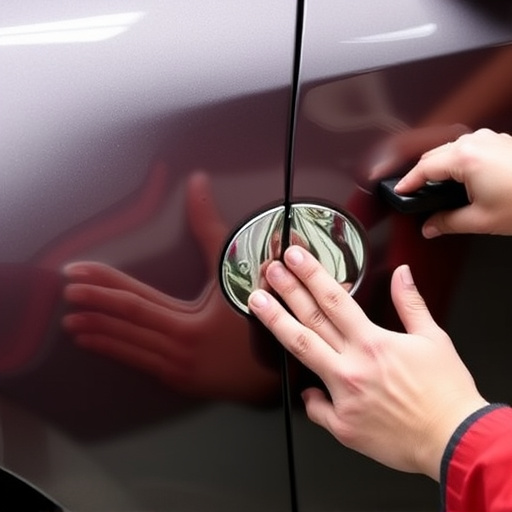Full panel replacement is a critical car body repair process, requiring skilled technicians to remove and replace damaged panels while assessing structural integrity. Post-replacement testing includes visual inspections and dynamic load tests for strength and fitment against OEM specifications. Advanced tools, detailed measurements, and CAD systems ensure each panel meets factory standards, enhancing vehicle stability, handling, and fuel efficiency. This meticulous approach guarantees high-quality work, satisfying customers seeking reliable full panel replacement services.
Post-replacement testing is a crucial step in ensuring the integrity and functionality of structural panels. This process, known as full panel replacement testing, verifies the strength and fit of newly installed panels, addressing potential issues overlooked during installation. Understanding the comprehensive replacement process and implementing effective testing strategies are essential for maintaining building safety and structural integrity. By focusing on optimal panel fit and strength, professionals can ensure long-lasting, secure, and code-compliant structures.
- Understanding Full Panel Replacement Process
- Essential Steps for Effective Testing
- Ensuring Optimal Panel Fit and Strength
Understanding Full Panel Replacement Process
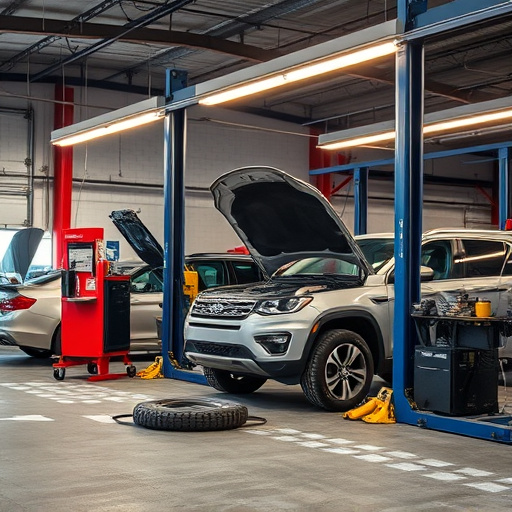
The full panel replacement process is a critical step in car body repair and vehicle dent repair, ensuring that each component is meticulously assessed and addressed for optimal structural integrity. It involves the complete removal and replacement of damaged or deteriorated panels, ranging from small dents to major accidents. This meticulous procedure demands skilled technicians who can accurately measure, cut, and fit new panels seamlessly into the existing car body restoration, maintaining the vehicle’s original aesthetics and performance.
During this process, specialized tools and techniques are employed to ensure precision. The old panel is carefully detached, taking note of its alignment and fixation points for accurate replacement. Once removed, the underlying frame and adjacent panels are inspected to identify any hidden damage or misalignments that might require attention. This thorough evaluation guarantees a solid foundation for the new panel, ensuring it will withstand the rigors of daily driving, enhancing both safety and vehicle longevity.
Essential Steps for Effective Testing
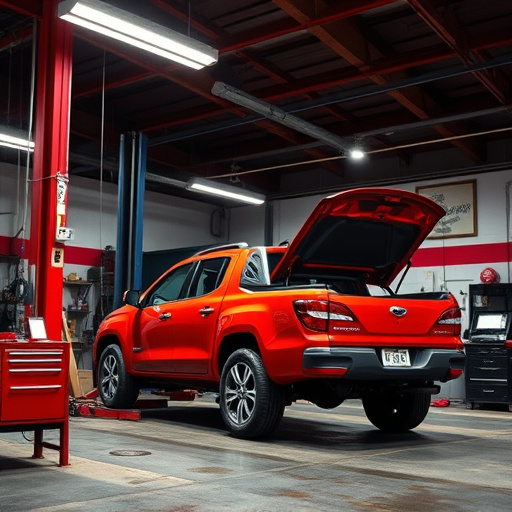
Post-replacement testing is a crucial step after installing a new panel, ensuring it meets the required standards for both strength and fit. This process involves a systematic approach to verify that the newly installed panel performs optimally and aligns with the vehicle’s structural integrity. Begin by visually inspecting the panel for any signs of damage or misalignment during the installation process. This initial check helps identify any errors before proceeding, ensuring a solid foundation for the upcoming tests.
The next essential step is performing dynamic load testing to mimic real-world conditions. This involves applying controlled forces to the panel while it’s attached to the vehicle, simulating various driving scenarios. By doing so, you can assess the panel’s resistance to deformation, impact, and fatigue, which are critical factors for safety and structural integrity. Additionally, checking the fitment against original equipment manufacturer (OEM) specifications is vital; this ensures not just visible alignment but also precise clearances for optimal performance and a seamless integration of the new panel with the existing vehicle structure, as one would find in top-notch auto repair near me or car bodywork services.
Ensuring Optimal Panel Fit and Strength
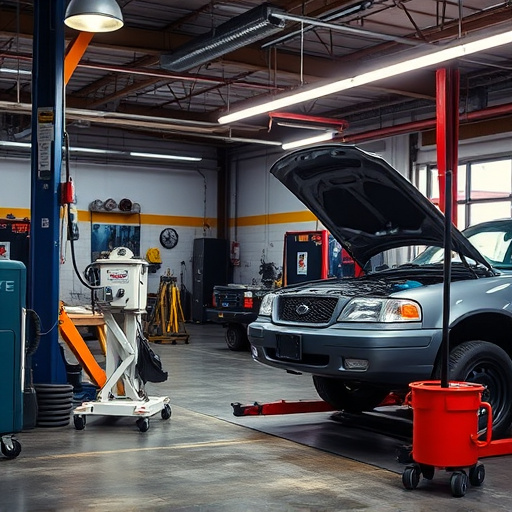
Ensuring optimal panel fit and strength is paramount after a full panel replacement at a collision repair center. Skilled auto body repair technicians understand that precise alignment and robust structural integrity are non-negotiable for vehicle safety and performance. They employ advanced tools and techniques to verify that all panels are securely fastened, maintaining the original factory specifications. This meticulous process involves detailed measurements, computer-aided design (CAD) systems, and rigorous testing to ensure each panel fits seamlessly and with the necessary strength to withstand everyday driving conditions and unexpected events, such as tire services or road debris.
Proper fitment goes beyond aesthetics; it directly impacts a vehicle’s overall stability, handling, and fuel efficiency. A well-executed full panel replacement should result in a vehicle that drives smoothly, handles predictably, and appears visually appealing. By prioritizing these factors, collision repair centers can deliver high-quality work that satisfies customers seeking reliable auto body repair services, ensuring their vehicles are safe and ready to navigate the road ahead.
Post-replacement testing is a vital step in ensuring the integrity and performance of any vehicle’s panel. By understanding the full panel replacement process, implementing essential testing steps, and focusing on optimal fit and strength, automotive professionals can deliver high-quality repairs that meet safety standards. This meticulous approach to full panel replacement guarantees not just aesthetic restoration but also structural soundness, enhancing the overall durability and value of the vehicle.
